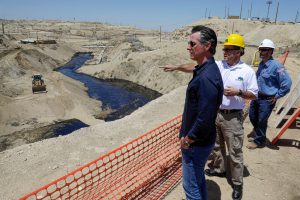The Dangerous Work of Demining Ukraine
REPORTS
Authors:
- Brian Dooley
- Maya Fernandez-Powell
Published on March 18, 2024
Following two Russian invasions in 2014 and 2022, Ukraine is the most mined country in the world. Efforts to clear mines from large parts of the country are underway, but local activists say that demining operations are severely hampered by bureaucracy and a lack of resources that slow the process.
About 30 percent of Ukraine’s territory — an area roughly the size of Florida — is contaminated by anti-personnel landmines (APLs), anti-tank mines, and various other explosives.[1] The Kharkiv Oblast is one of the most heavily mined regions in the country; the forests around Kupiansk, Vovchansk, and Izyum are deeply contaminated with explosive devices.
A wide variety of munitions are locally called mines, including KPOM-2 and KPOM-3 cassettes, PFM 1-S, PMN-2, and PMN-4s. They include trip-wired explosives and fragmentation munitions, and explosive booby traps left in buildings by retreating Russian forces. The TM-62P3 anti-tank mine is made of plastic and it is very difficult to find with a metal detector. For more information, see here.
APLs are devastating weapons, designed to indiscriminately kill or maim by shattering limbs of their victims. Decades after the end of a conflict, APLs continue to injure and kill people as well as cripple social and economic endeavors by preventing the use of large portions of land for farming or other needs.
Many APLs in Ukraine are hand-sized weapons that were delivered by aircraft or mortars. Known locally as “petals” because of their shape, they are increasingly difficult to spot as new vegetation covers them in the spring. These “petal” mines saturate much of the country, including the fields and roads in the Kharkiv region in northeast Ukraine. Much of this region borders Russia and was occupied by Russian forces for most of 2022.
Ukraine’s counteroffensive in the fall of 2022 reclaimed much of the territory, pushing the battle front back toward the Russian border. A huge demining operation has begun in this area, but the massive undertaking is made even more challenging by regular missile bombardments and recent Russian advances from the east.
In March 2024, Human Rights First visited minefields in the Kharkiv region and spoke to civilians supporting mine clearance work including demining specialists — known locally as sappers — working for the emergency services.[1] Some sappers use metal detectors to clear the fields by hand, while others use remote-controlled vehicles. It is slow, difficult, and highly dangerous work.
Fully demining Ukrainian land is likely to take decades, and as authorities are overwhelmed by the scale of work required, unlicensed demining operations are springing up. Some desperate civilians do the enormously dangerous job for themselves.
In the 1990s, the International Campaign to Ban Landmines (ICBL) advocated for countries to abide by the Ottawa Convention, also known as the Mine Ban Treaty, which banned APLs among signatories. In 1997, the ICBL was awarded the Nobel Peace Prize for its efforts.
Ukraine signed the Mine Ban Treaty in 1999, and ratified it in 2005. Russia has not joined the treaty, but its use of antipersonnel mines violates international law due to the inherently indiscriminate effects of these weapons. Human Rights First has for years urged the United States to ratify the Mine Ban Treaty.
Ukraine’s official emergency services have sappers that work across the country within approximately 1.5 miles of the front line – military sappers handle areas closer to the front.
The 1997 Mine Ban Treaty comprehensively bans antipersonnel mines and requires destruction of stocks, clearance of mined areas, and assistance to victims. The Mine Ban Treaty entered into force on March 1, 1999, and its 164 states include all NATO member states except the United States, and all European Union member states. Human Rights First has for years urged the United States to ratify the Mine Ban Treaty.
https://humanrightsfirst.org/wp-content/uploads/2024/03/Inch-by-Inch_March_2024.pdf




